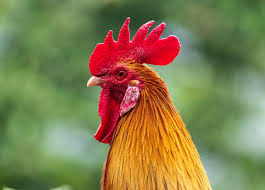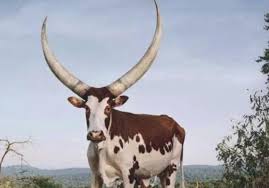Compound VB Injection
Name:
Compound VB Injection
Common Capacity:
- 50ml; 100ml per bottle
- 500ml; 1000ml per bottle
- 20ml/30ml/50ml (when combined with other compounds)
Applicable Animals:
Global Livestock Application:
- Pigs: Piglets, growing pigs, breeding sows, boars (for growth, immunity, stress prevention, and nerve function).
- Poultry: Chickens, ducks, turkeys (for growth, egg production, stress prevention, and metabolic support).
- Cattle: Calves, adult cattle (for growth, fertility, recovery from illness, and metabolic disorders).
- Sheep & Goats: Lambs, adult sheep/goats (for general health, stress, and specific deficiencies related to energy metabolism).
- Aquatic Animals: Fish, shrimp (for growth, disease resistance, metabolic functions).
- Special Farming: Rabbits, mink, foxes, horses (for overall health, energy metabolism, and specific deficiencies).
- Pets: Dogs, cats (for general health, nerve function, and specific deficiencies).
Usage and Dosage:
Compound VB Injections are primarily used to prevent or treat deficiencies of B vitamins, support energy metabolism, improve nerve function, and aid recovery from stress or illness. The exact dosage depends on the specific formulation (the types and concentrations of B vitamins included, and other active ingredients), animal species, age, weight, and the animal’s nutritional status or health condition. Always consult a veterinarian for precise dosage recommendations.
General Guidelines (example components found in references):
- For Injection Solution (Intramuscular/Subcutaneous):
- Specific formulations might include ingredients like Vitamin B12 (Cyanocobalamin) , Vitamin B15, and potentially other B vitamins.
- Dosages are highly variable based on the concentration of active ingredients and the animal’s needs.
- Large Animals (Cattle, Horses): Typically 10-20 ml per animal per dose. For specific racing horse formulations, components like Vitamin B12 can be 10mcg per ML , or B15 0.2mg/ml .
- Medium Animals (Pigs, Sheep, Goats): Typically 5-10 ml per animal per dose.
- Small Animals (Poultry, Rabbits, Calves, Piglets): Typically 1-5 ml per animal per dose.
- Pets (Dogs, Cats): Doses vary greatly by body weight, usually 0.5-2 ml.
- Frequency: Doses can be single or repeated every few days, depending on the need and severity of deficiency.
- Growth Stages (Example for common species):
- Young/Growing Animals: Often used to support rapid growth and development by ensuring efficient energy metabolism.
- Adult Animals: Used for maintenance, preventing deficiencies during periods of high demand (e.g., breeding, lactation), stress periods, or during recovery from illness.
- Breeding Animals: Crucial for reproductive health, fetal development, and maintaining stamina.
Applicable Diseases and Symptoms:
Compound VB Injections are supportive therapies, not direct antibacterial agents. They address or prevent conditions related to B vitamin deficiencies, metabolic stress, and support overall animal health:
- B Vitamin Deficiencies:
- Anemia: Particularly megaloblastic anemia related to Vitamin B12 deficiency .
- Neurological disorders: Conditions affecting nerve function, as B vitamins (especially B1, B6, B12) are vital for the nervous system.
- Metabolic disturbances: Impaired energy utilization, reduced appetite, and poor growth due to deficiencies in B vitamins involved in carbohydrate, fat, and protein metabolism.
- Stress Conditions: During transportation, intense training (e.g., racing horses), vaccination, deworming, or changes in feed, which can increase vitamin requirements.
- Convalescence: To aid recovery from bacterial, viral, or parasitic diseases by supporting metabolism and immunity.
- Stimulating Appetite and Growth: To improve feed intake and conversion efficiency, especially in young or recovering animals.
- Other Specific Combinations: Some formulations may include other active ingredients like Dexamethasone, Flumethasone, Phenylbutazone , or ATP , suggesting use for inflammation, pain, or energy support alongside B vitamins.
Precautions:
- Allergy/Hypersensitivity: Although rare, some animals may exhibit allergic reactions to certain vitamins or excipients. Monitor animals after administration.
- Injection Site Reactions: Transient swelling or discomfort at the injection site may occur. Ensure proper aseptic technique during administration.
- Overdosing: Water-soluble B vitamins are generally safe due to rapid excretion, but extremely high doses might rarely lead to adverse effects. Follow recommended dosages strictly.
- Drug Interactions: Be cautious when co-administering with other medications. Certain drugs can interfere with B vitamin absorption or metabolism. Consult a veterinarian about potential interactions.
- Storage: Store in a cool, dark place, protected from light. Keep out of reach of children.
- Withdrawal Period: B vitamins themselves typically do not have withdrawal periods. However, if the compound injection contains other active pharmaceutical ingredients (APIs) like corticosteroids or NSAIDs , their respective withdrawal periods must be strictly observed.
Contraindications:
- Known Hypersensitivity: Do not use in animals with a known hypersensitivity to any of the ingredients.
- Specific Disease States: In some cases, specific B vitamins might be contraindicated or require adjusted doses for certain health conditions (e.g., certain neurological conditions might require careful vitamin balancing).
Post-Treatment Care:
- Observe for Adverse Reactions: Monitor animals for any signs of allergic reactions (e.g., rash, swelling, difficulty breathing) or adverse injection site reactions.
- Maintain Good Husbandry: Ensure animals have access to clean water, balanced feed, and a comfortable environment to maximize the benefits of vitamin supplementation.
- Monitor Clinical Response: Assess if the animal’s condition improves as expected. If the underlying signs of deficiency or stress persist, consult a veterinarian about further diagnostic and treatment options.
- Record Keeping: Maintain accurate records of all treatments, including drug name, dosage, date, route of administration, and animal identification.
Applicable Animals
Animal species suitable for this veterinary medication




